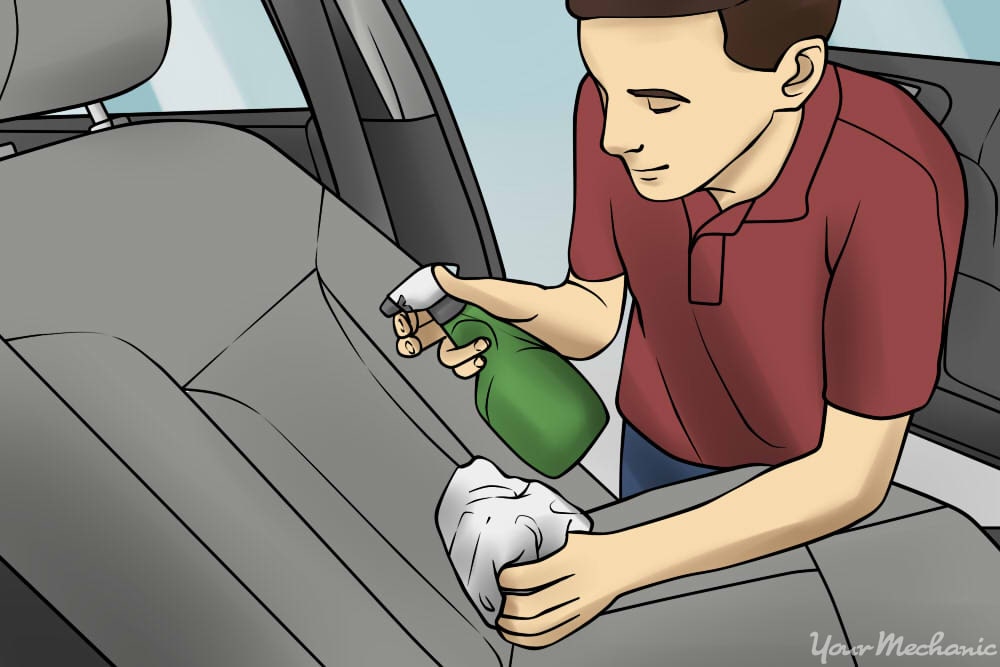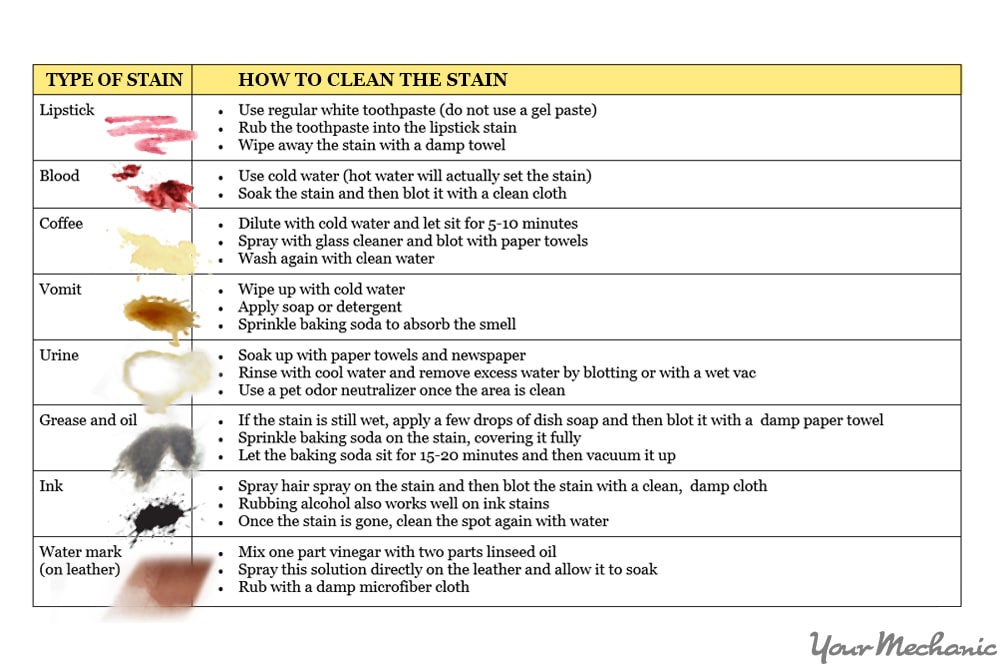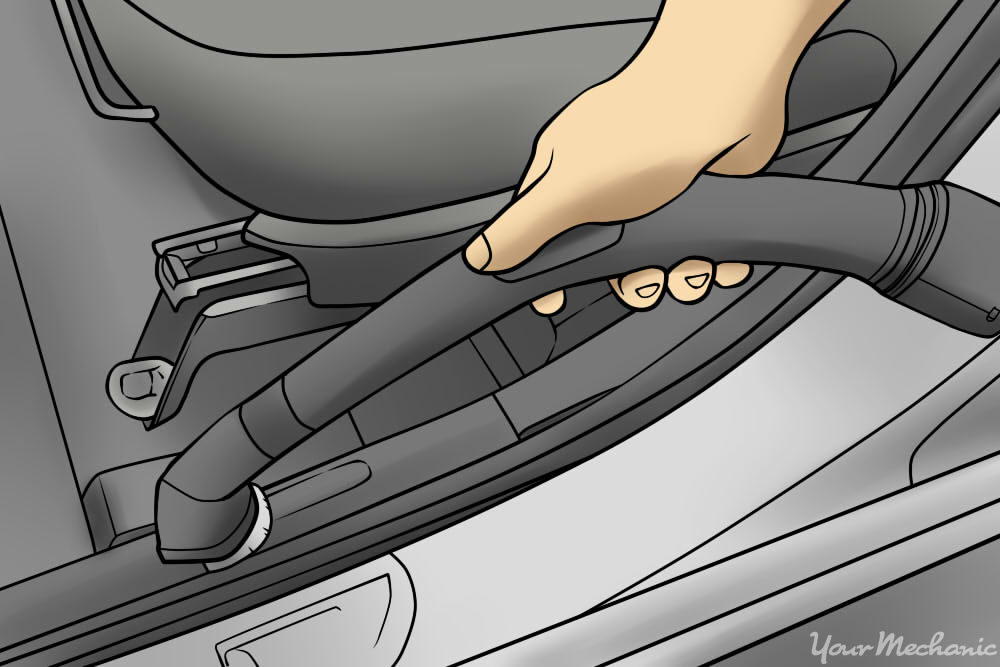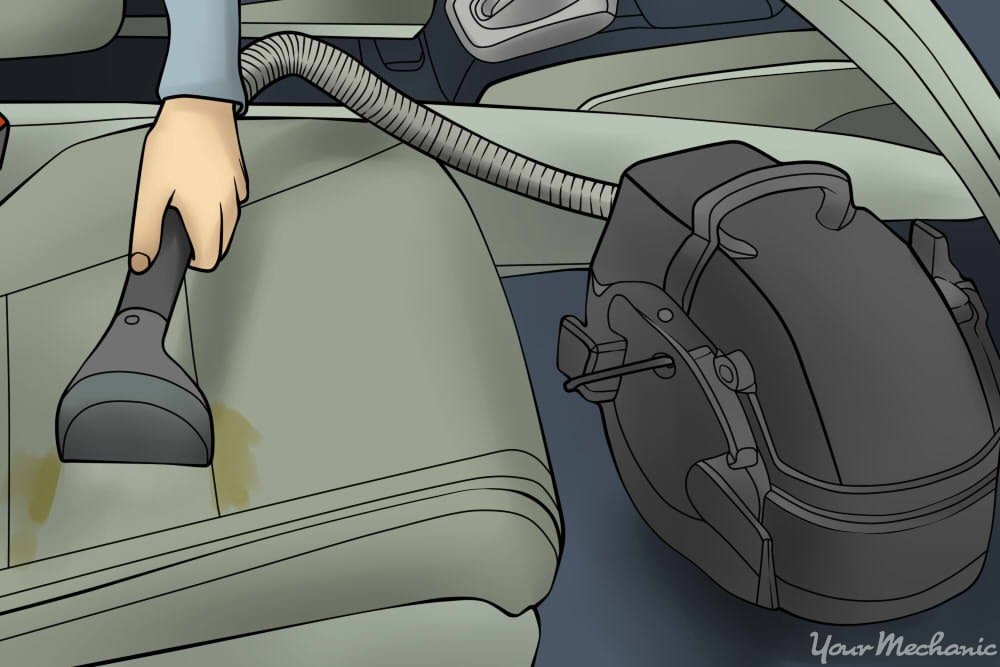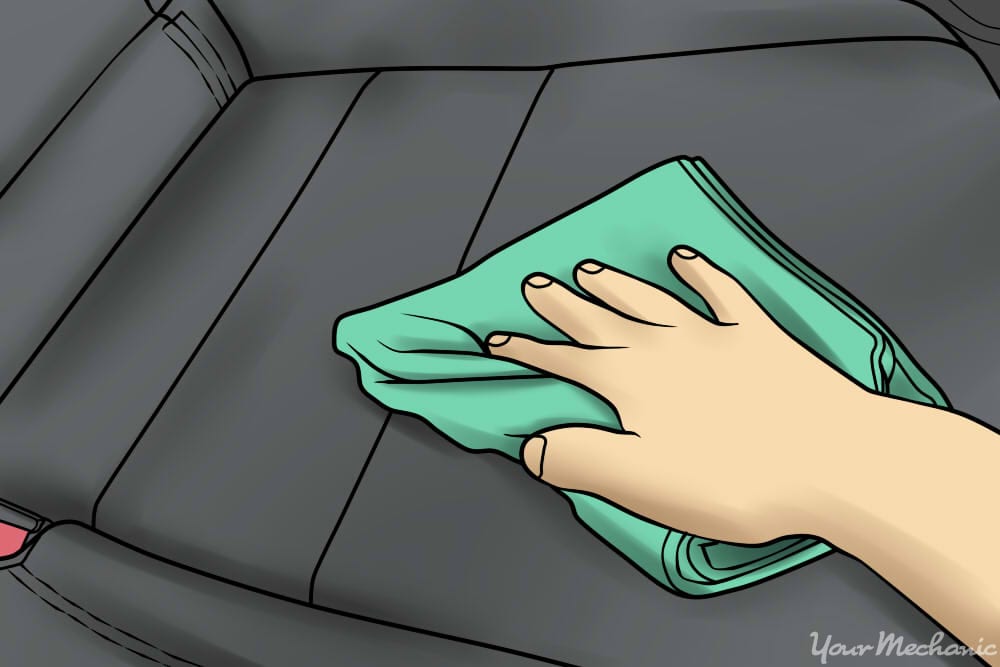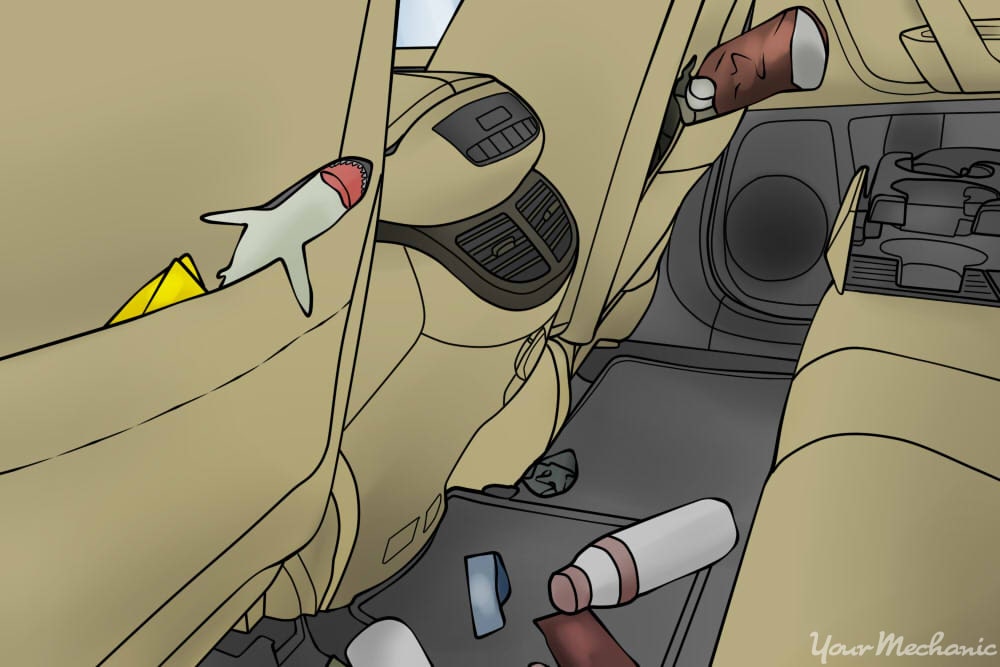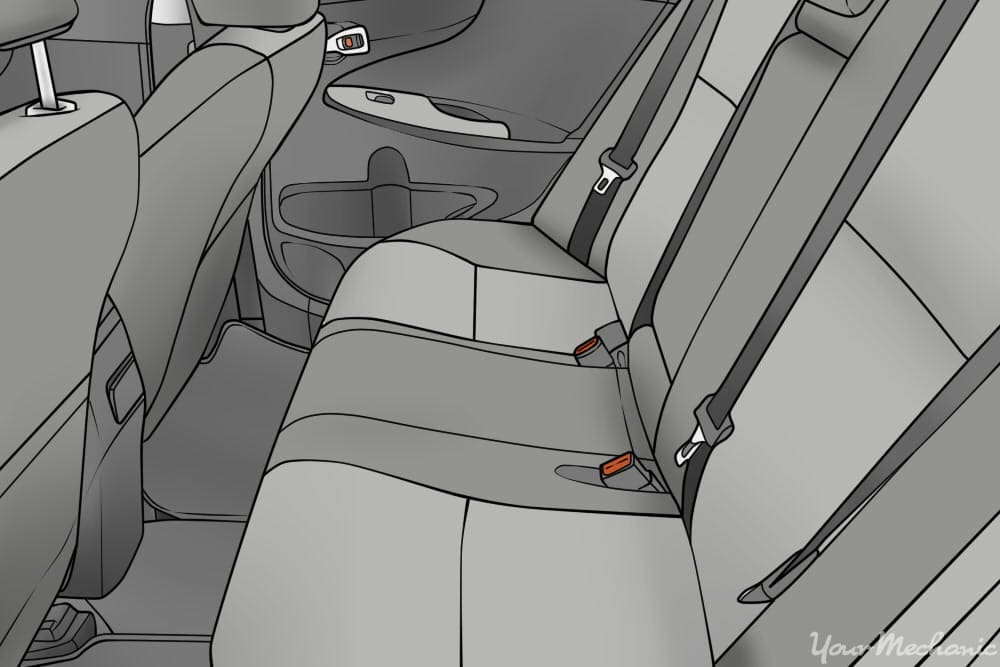

Maintaining the interior of your vehicle can be a difficult and tiresome job but it is a necessity. It not only keeps the vehicle clean but it also will help the resale value when it time to move up to a new car. The interior, and especially the upholstery, can become permanently stained if debris and spills are allowed to sit for long periods of time.
The best practice is to clean the interior of your car on a regular schedule and attack big stains and spills as soon as possible to make sure they don’t become a permanent part of your vehicle’s landscape.
There are definitely differences when it comes to stains and upholstery types so using the correct method and product will ensure that all the grime is gone and the cleaning itself doesn’t do further damage to your interior.
Here are the best methods of keeping the interior of your vehicle nice and clean.
Method 1 of 8: Spot-clean stains
Spills can create a nasty stain on upholstery and they should be cleaned up immediately. When dealing with most stains, blotting is the way to go. Blotting will help pull the stain up and out of the fabric. Here is a guide on how to remove stubborn stains:
Step 1: Choose your product. When dealing with a tough stain you will usually need more than water and soap. There are dozens of products available that will do the job.
Meguiar's Carpet & Upholstery Cleaner: This product will work on both carpet and upholstery.
Tuff Stuff: This is another multi-purpose cleaning product that deals with both upholstery and carpet.
Step 2: Apply the product to the stain. Shake well and hold the can upright as you spray the spot. Scrub the stain with a damp cloth if necessary and then wipe clean with a dry cloth.
Method 2 of 8: Address general stains
When dealing with general dirt and grime, this method should have your seats looking new in no time at all.
Step 1: Test the product. Anytime you are using a new product on your vehicle’s upholstery, you should do a test spot in an inconspicuous place to make sure it does not stain or discolor the fabric or leather.
Step 2: Apply the product. Apply the product to the stain as directed by the manufacturers directions and let it soak in for a few minutes.
Step 3: Scrub the stain. Scrub the stain with water, use a microfiber cloth or soft bristled scrub brush if the stain proves to be very stubborn.
Step 4: Rinse. Rinse the spot with clean water and a clean microfiber cloth to get rid of all the cleaning product and debris.
Method 3 of 8: Deal with specialty stains
Not all stains are created equal. If you have one of the specialty stains listed below, here are a few tips on how to clean them up:
Method 4 of 8: Get rid of grease and oil stains
Grease or oily stains can be one of the more difficult stains to remove. There are a number of ways to kick these stains to the curb.
Solution 1: Paint thinner: Use paint thinner combined with equal parts water to clean up a greasy stain or oil. Use a clean cloth to dab it on the stain. This should help pull the stain out. Clean the spot with clean water once the stain has been removed. Before using paint thinner on upholstery, do a test spot in a place that is not visible.
Solution 2: Detergent: You can also use common household detergent to clean oil or grease from a vehicle’s upholstery. Squeeze a few drops of detergent on the stain and allow it to sit for roughly five minutes. This should loosen the grease spot. Blot the spot up and rinse with clean water.
Method 5 of 8: Give the interior a general cleaning
Giving the interior of your vehicle a general cleaning from time to time is always a great idea. The longer dirt and grime has to burrow into the fabric the harder it will be to get out. Here are some general guidelines for cleaning up the interior of your car.
Step 1: Gather your tools. In order to properly clean the interior of your vehicle you will need a variety of tools. Here is a list of items you should have handy before you start the project:
- Bucket of water
- Microfiber cloths
- Soft bristled scrubbing brush
- Soft, clean cloth or sponge
- Upholstery Cleaner
- Vacuum
A quick word on upholstery cleaners. There are dozens of brands available or you can make your own homemade cleaner. These two upholstery cleaners come highly recommend as a cleaner and an odor remover.
Step 2: Cleaning the interior of your car. The interior of a car contains a number of different sections that require cleaning and in most cases each section may require a different method of cleaning. Here is a quick rundown on how to give the interior a good cleaning:
Wipe down the seats: Before you get into the heavy cleaning it’s best to wipe down the seats with a damp cloth. This will help remove any debris or dust that is not ground into the upholstery.
Spot test your products: Cleaning products can be fickle so make sure you do a spot test on a section of the seat that is not easily visible to make sure it doesn’t stain or discolor your upholstery or leather.
Vacuum the car: Use a vacuum cleaner to get up all of the large, easy to clean debris on both the seats and the floor. If possible, use a wet/dry vac, which tend to be more powerful than a regular vacuum cleaner. They are usually equipped with a long hose and cord, which makes cleaning the entire vehicle a snap. If a wet/dry vac is not available, consider a coin-operated vacuum at a car wash.
When vacuuming, get the most out of your vacuum cleaner by using all of the tools. The thin and narrow crevice tool can get into all of those hard to reach small spaces and the soft brushes are best for seats, especially leather seats that can scratch easily.
-
Be sure to pull out the floor mats and vacuum the carpet underneath the mats as well as the mats themselves. Reposition and recline the seats to get all of the dust and dirt that collects in the crevices of the seats and underneath the seats.
- Cleaning fabric upholstery: Fabric seats are pretty common in today’s vehicles and they tend to hold dirt and grime that can make them look extremely dirty. Cleaning a fabric interior on a regular basis is important.
-
When cleaning a fabric interior there are a number of commercial products you can use or you can go the homemade route. If you prefer to go homemade, simply use 1 part water with 1 part dishwashing liquid. Put this mixture into a spray bottle for easy application.
- Tip: Always test your product in an inconspicuous location prior to a full application.
Spray the product (commercial or homemade) directly on the fabric upholstery and rub the fabric with a clean, damp cloth or a soft bristled brush. Blot the fabric for a few minutes and then rinse the fabric with a clean rag and water. Once the area is clean, dry it off with a microfiber cloth.
-
Consider a steam cleaner: If the fabric is really dirty and it still looks filthy after a thorough cleaning with a cleaning solution, you may want to consider renting a steam cleaner.
- These machines can be rented at most grocery or rental stores. A steam cleaner will provide a deep clean by spraying hot water and cleaning solution onto the fabric or carpet and then sucking the water and dirt back up.
- Follow the manufacturer’s instructions, change the water out frequently, and allow the vehicle to dry for at least 12 hours after the steaming cleaning.
- Steam cleaning should clean up any remaining stains and leave the fabric looking and smelling clean and fresh.
-
Vinyl upholstery: Vinyl is one of the easiest types of upholstery to clean. Like leather, most spills will wipe off of vinyl easily. Cleaning the seats is just as easy. Spray glass cleaner such as Windex onto the seats and simply wipe them down with a clean microfiber cloth.
- If the vinyl is particularly dirty, a mixture of water and baking soda will help clean and polish the seats. Mix one part water and one part baking soda into a paste. Rub it on the seats and then rinse off with water and soap. When the seats are clean dry them with a clean cloth.
Method 6 of 8: Cleaning leather
Leather upholstery requires a different type of cleaner. There are numerous leather cleaners available or you can make your own. Here is a highly recommended leather cleaner:
If you prefer a homemade cleaner, mixing one-part vinegar and two parts linseed oil will give you a cleaner that will get the job done and is easy on the leather. Products that are silicone or petroleum based should be avoided because they can leave a shiny residue on the leather.
When cleaning leather, follow these steps:
Step 1: Spray on the solution. The leather cleaner should be sprayed directly on the leather seats. Prior to putting it on all of the seats, do a test spot in a hard to see area to make sure it does not stain the leather.
Step 2: Wipe it down. Use a soft wet cloth to apply the cleaning product and let it sit for a few minutes to soak in which will break up the dirt in the leather.
Step 3: Use a brush. If the leather is really dirty, use a soft brush to give the leather a deep cleaning.
Step 4: Wipe the seats clean. Once you have cleaned the seats, wash off the cleaning product with a damp cloth. The seats should be clean by this point, if not repeat these steps until they are nice and shiny.
Step 5: Condition the seats. Using a conditioner on the seats will help them keep soft. Do not use a conditioner that has silicone, petroleum distillates or wax as it can damage the leather. Look for one that is pH neutral.
Apply the conditioner by rubbing it into the leather with a sponge or microfiber cloth. It is best to use conditioners sparingly so they don’t leave a film on the leather.
Rub the conditioner in thoroughly and then wipe off any excess conditioner. The vehicle should be parked in a shady location for the next 12 hours and then the seats should be given one last rubdown.
Leather seats should be cleaned and conditioned a few times a year to keep them in prime condition.
Step 6: Clean the seams. It’s not just the large seat sections that need to be cleaned, don’t forget the seat seams. Scrubbing the seams with a small brush will clean up the seams quickly.
Method 7 of 8: Keep the car clean
Maintaining your car means you will spend less time cleaning it. It will also help the resale value when you want to sell it. Keeping a car clean is fairly easy if you make it a priority and a habit:
Clean messes and spills immediately. This will prevent dirt and grime from getting ground into the seats and carpet.
Vacuum the vehicle on a weekly basis.
Remove garbage from the car daily, or at least weekly.
Consider seat covers. They will protect your seats and collect all the spills and messes. When it’s time to sell the vehicle, just take the dirty covers off.
Apply Scotchguard Fabric Protector to your upholstered seats. It adds another layer of protection to your seats.
If possible, limit food and drink in your vehicle. This can be difficult with children.
Method 8 of 8: Hire a pro
If you are just not up to cleaning your vehicle or if it needs to be spotless for a special occasion, consider hiring a professional detailer. A detailer will go beyond just cleaning the upholstery and floor mats, they will detail the dashboard, vents, windows, and exterior of the vehicle.
If you are going to hire a detailer, here are a few pro tips to ensure you get a brand new looking car:
Get recommendations from friends and family.
-
Verify they are properly insured in the event they damage your car.
- Ask about the products they use, if you are unhappy with their selection ask them to use products of your choosing.
Get a price quote upfront before they start the work.
Never pay for the detail until you have inspected the vehicle and it is cleaned to your satisfaction.
Driving a clean car just makes you feel better so make sure you clean your vehicle on a regular basis and tackle any spills or stains immediately.


